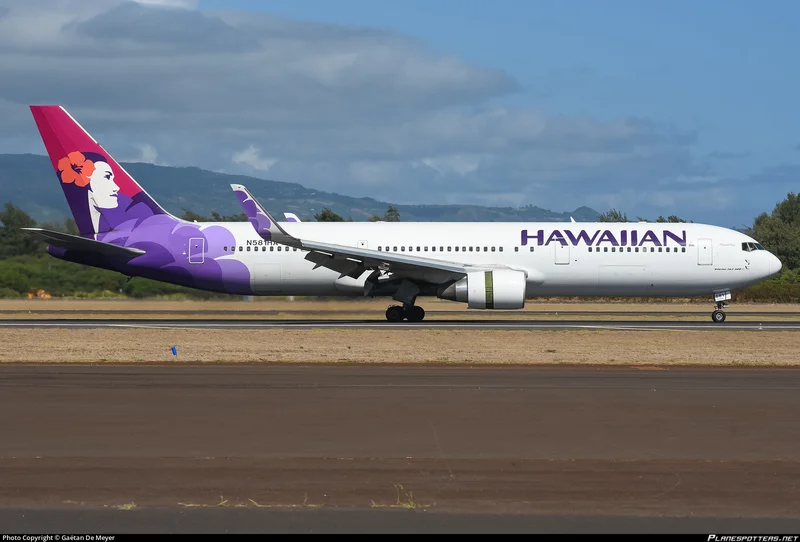Hawaiian Airlines' Next Horizon: What the Alaska Merger Means for Your Miles and Future Flights
When a signal that has echoed through the skies for nearly a century finally goes silent, it's easy to mistake it for an ending. On October 29th, Hawaiian Airlines flight HA 866 will make its final journey under that historic callsign. After that, the "HA" that has been synonymous with Pacific travel will be retired, replaced by the "AS" of its new parent, Alaska Airlines.
For many, this is a moment of pure nostalgia, a somber bookend to an era of independent aviation. I get it. When I first read about the final 'HA' callsign, I honestly felt a pang of nostalgia for something I've long admired from a distance. But then, looking at the technical roadmap and the digital architecture being built, I realized this isn't an ending. It's a translation. It’s the digital rebirth of a legacy, a fascinating experiment in whether a brand's soul can be uploaded to a new, more powerful operating system.
What we're witnessing isn't just a corporate merger; it's a technological one. It’s a case study in digital preservation, asking a profoundly modern question: Can you protect a cherished cultural identity while integrating it into a ruthlessly efficient, unified platform?
The Ghost in the New Machine
Let’s get the technical details straight, because they’re the key to this whole story. The shift from "HA" to "AS" is happening because both airlines will now fly under a "single operating certificate"—in simpler terms, it's the FAA's master license to fly, and now both airlines will share one, which is a massive logistical and regulatory undertaking that Alaska Airlines describes as A technical milestone for the Alaska and Hawaiian combination – and what it means for your travel. Think of it like the standardization of railroad gauges in the 19th century. It was a messy, painful process for many, but it was the essential step that allowed a truly interconnected national network to be born. That’s what Alaska is building here: a single, seamless network.
But here’s where it gets brilliant. The code may say `Alaska Airlines`, but the experience is being meticulously preserved. When you book a `Hawaiian Airlines flight` after the full transition in 2026, the fine print will read "operated by Alaska as Hawaiian Airlines." This isn't just legal jargon; it's a piece of code designed to be a vessel for a feeling. It's an emulator, running the classic "Aloha" software on brand new hardware.

This is the ghost in the new machine. The spirit of Hawaiian isn't being erased; it's being encoded. But this raises a fascinating question, doesn't it? We know a flight number can get you from Maui to Seattle, but can that same string of characters also carry the weight of a culture, the warmth of a specific kind of hospitality? Can the feeling of ‘ohana’ survive being a sub-routine in a larger corporate program? Alaska Air Group is betting billions of dollars that it can.
Building the Architecture of Aloha
The real magic, the part that gets me truly excited, isn't in what's ending, but in what's being built. Starting in April 2026, a new multi-brand digital platform will become the single gateway for booking travel. This isn't just about putting a new coat of paint on a website. This is a ground-up reconstruction of the airline's digital nervous system.
Imagine this: for the first time, travelers from around the world will be able to book a `Hawaiian Airlines flight` in their own language and their own currency, with access to every single seat type and product on offer. This is a huge leap forward, it’s not just a website refresh, it’s a fundamental rewiring of how a global audience connects with the islands of Hawaii, making the experience more accessible than ever before. It’s taking the famously warm, welcoming spirit of Hawaiian and building a digital front door that’s just as inviting.
And this isn't just a backend project. They're investing in the human future, too, with over 60 paid internships planned for the summer of 2026 across Honolulu, Seattle, and other hubs, inviting applicants to Dream big, fly far: Apply now for a summer 2026 internship at Alaska, Hawaiian and Horizon. This isn't the action of a company looking to strip an acquisition for parts. It's the action of one looking to fuse two teams together to build something new, something bigger.
Of course, with this kind of integration comes a profound responsibility. The team at `Alaska Airlines` has become the digital steward of a nearly 100-year-old brand. They must ensure that the "Aloha spirit" doesn't become a hollow marketing phrase, a skin draped over a generic corporate skeleton. The temporary branding confusion some customers are seeing in emails is a small-scale reminder of how delicate this process is. Every digital touchpoint, every email, every pixel on the booking page, has to reflect the promise of that "operated by Hawaiian" disclosure. Can they maintain that integrity at scale?
The New Language of Aloha
So, what are we really looking at here? This isn't the death of an airline; it's the evolution of a brand into a new technological ecosystem. For decades, the identity of `Hawaiian Airlines` was tied to its planes, its callsign, its physical presence. Now, its identity is being translated into a more abstract, more powerful form: a digital experience, a set of service standards, and a promise embedded in the code of a larger network. It’s a daring proposition, suggesting that a brand’s soul isn’t in its name, but in the signal it transmits—and that signal is about to be amplified for the whole world to hear.
